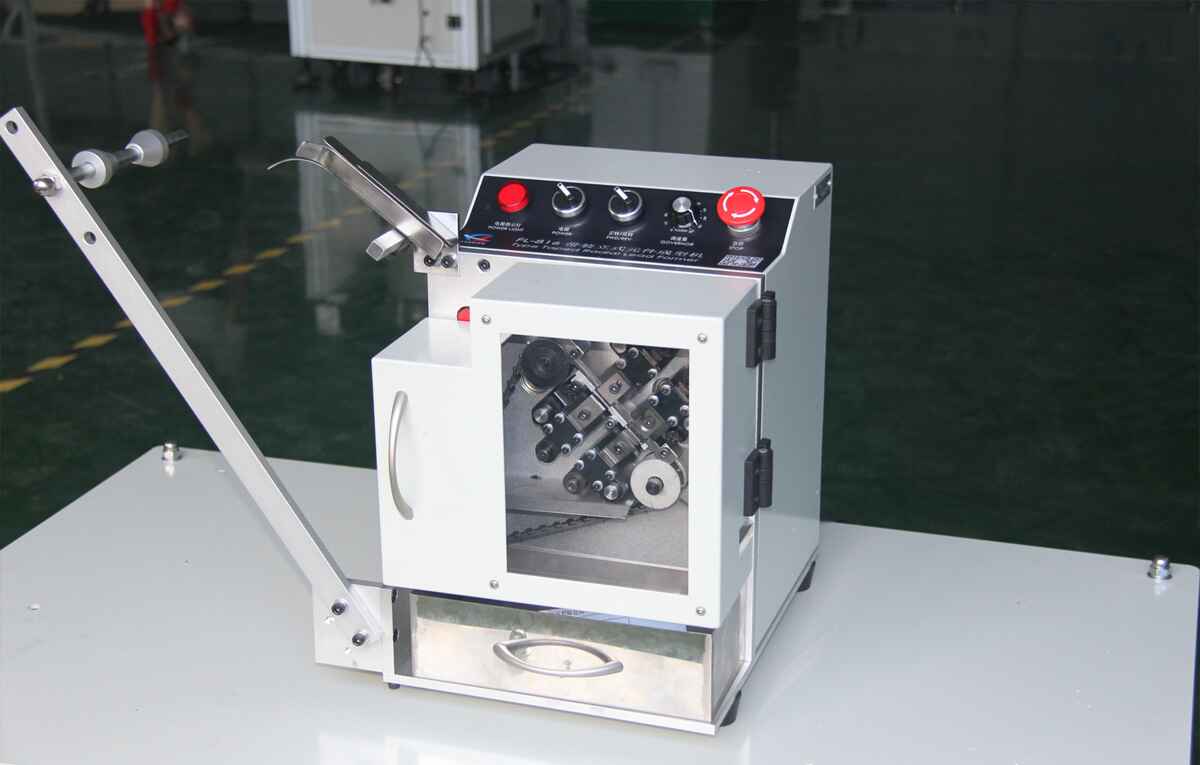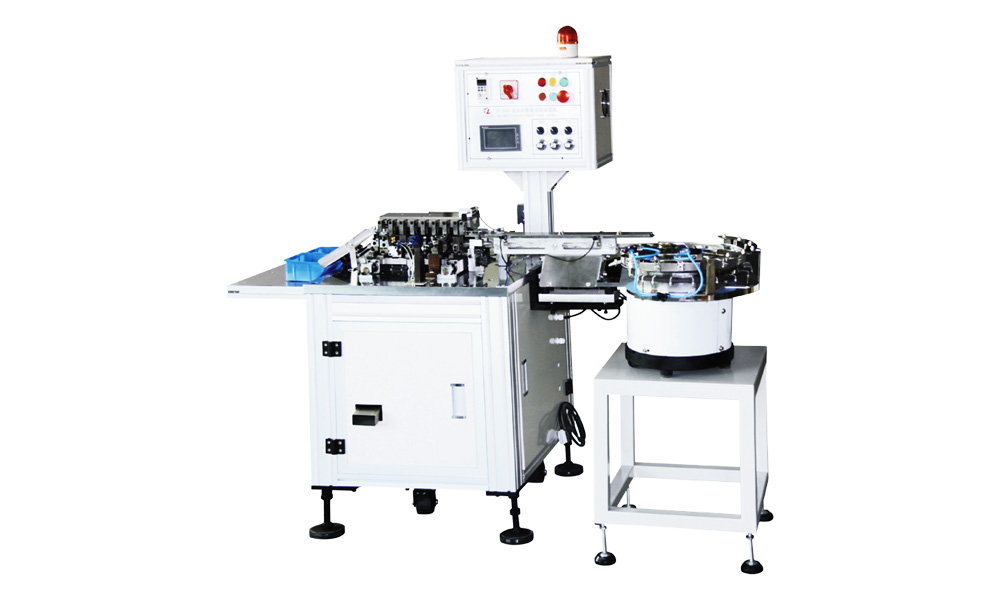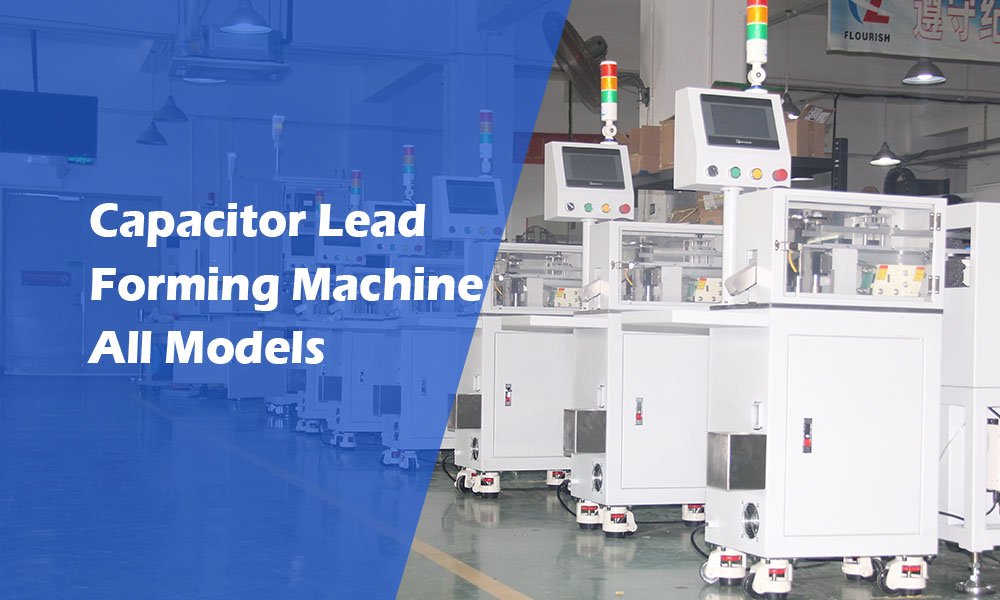A practical, engineer-focused guide to selecting the right lead cutting machine for TO and SMD leaded components. (Professional, American English)
Introduction — Why the right lead cutter matters
In modern electronics production, precise and consistent lead trimming for discrete transistors and through-hole components is more than an assembly convenience — it directly affects solder joint reliability, yield, and rework rates. Choosing the correct transistor lead cutting (lead-trimming) machine reduces downstream defects, shortens cycle time, and improves overall line OEE (Overall Equipment Effectiveness).
Quick links: view our FL-917 IGBT/Transistor Forming Machine and FL-805 Manual Capacitor Cutter.
1 — Cutting Precision: the foundation of product reliability
Why it matters Precision defines how consistently the machine trims lead length and forms the final bend/seat. Tighter tolerances (for many production lines, ±0.1 mm or better) reduce variance at the soldering step and prevent cold joints, tombstoning, and shorting. Precise trimming also keeps component bodies at the correct stand-off height for thermal transfer and mechanical stress relief.
What to measure and demand
- Repeatability (standard deviation of trim length after 1,000 cycles).
- Absolute accuracy versus your PCB footprint spec (mm).
- Edge quality — burrs or torn plating increase solder defects.
2 — Cutting Speed & Throughput (pcs/hour)
Speed is often reported as pieces per hour (pcs/hr) or cycles per minute. But raw speed alone is a poor KPI — consider:
Throughput vs. Quality tradeoffs
- Cycle time with quality checks: Does the spec speed assume inspection/reject handling?
- Feed system efficiency: Auto-feeders, vibratory bowls, or taped feeders greatly affect achievable throughput on the line.
- Changeover time: How quickly can tooling be swapped when switching packages?
In high-volume lines, a 10–20% improvement in real throughput (after rejects/rework) can be worth a machine upgrade — small per-piece savings scale quickly. Consider full-automation (indexed feeders + automatic reject) for >20k pcs/day. See our model comparison for automation tiers on the Products page.
3 — Component Compatibility & Flexibility
Different production mixes require different jaws, fixtures, and blades. Before purchase, map the range of parts you plan to process:
Checklist
- Package families you must support (e.g.,
TO-220,TO-92,SOT-223, radial leads). - Range of lead diameters and plating types.
- Ability to accept custom fixtures or quick-change tooling.
Machines with adjustable blade sets and modular fixtures reduce the need to buy separate equipment for each package type — that lowers floor space and CAPEX for mixed-product shops.
See our IGBT/transistor forming solutions for examples of flexible tooling: FL-917 and related models.
4 — Build Quality & Durability
Material choices (frame, critical shafts, bushes, blades) determine long-term stability. Look for:
- Rigid frames (aluminum extrusion with steel reinforcement or cast iron bases) to resist vibration.
- Hardened blade holders and replaceable cutting inserts.
- IP-rated motors/drives if your environment contains flux, cleaning solvents, or cutting dust.
Evaluating materials and wear parts is standard practice in manufacturing procurement — prefer designs that allow field replacement of blades, bearings, and motors with documented MTBF/MTTR figures.
5 — Brand Reputation & After-Sales Support
Reliable after-sales service is critical to keep a production line running. If your operation cannot rely on next-day parts delivery, prioritize vendors that offer strong on-site service and timely remote support. Evaluate:
- Engineer on-site service: availability of certified field engineers who can come to your facility for repairs, adjustments, and preventive checks.
- Timely phone support & remote guidance: responsive phone/remote troubleshooting to reduce diagnosis time and guide local technicians through temporary fixes.
- Service contracts and preventive maintenance: scheduled visits, training for your operators, and documented maintenance plans.
For many factories, fast, experienced on-site engineers combined with effective phone guidance reduces downtime more than parts lead time alone. When evaluating vendors, request SLAs for on-site response windows, remote support hours, and a sample maintenance schedule.
“A skilled engineer on-site plus quick phone guidance prevents the majority of production interruptions — it’s frequently more valuable than fast parts shipping alone.” — Head of Operations, Medium-volume Power Supply Manufacturer
Comparison Table: Quick summary
| Buying Factor | What to look for | Recommended spec (typical) | Why it matters |
|---|---|---|---|
| Cutting Precision | Repeatability & burr-free finish | ±0.05–0.15 mm (depends on product) | Consistent solder joints & mechanical fit |
| Cutting Speed | Pcs/hr (measured with full handling) | 5,000–20,000 pcs/hr (varies by automation) | Production throughput & labor cost |
| Compatibility | Package families & quick-change tooling | Support TO, radial, specialty leads | Reduces need for multiple machines |
| Durability | Frame + replaceable wear parts | Hardened cutters, sealed bearings | Lower lifetime operating cost |
| After-Sales | On-site engineers, phone support, service plans | Engineer on-site response; dedicated phone support | Minimizes unplanned downtime |
Expert recommendations — How to choose for your factory
Small volumes / R&D
Choose a flexible, lower-cost machine with quick manual changeover and low minimum run requirements. Prioritize tooling flexibility and easy access to blades; ensure vendor offers timely remote support and scheduled on-site assistance for critical setups.
Medium volumes / Contract Manufacturing
Balance speed with tooling flexibility. Invest in a machine supporting modular fixtures and moderate automation — and secure a service contract that includes periodic on-site engineer visits and dedicated phone support.
High volumes / OEMs
Full automation with automatic feeding, inline inspection, and robust preventive maintenance plans is a must. Negotiate on-site response SLAs and access to senior field service engineers during ramp-up and critical production periods.
When possible, request a Factory Acceptance Test (FAT) that replicates your actual production mix and includes a service scenario — for example, have the vendor simulate a failure and demonstrate remote troubleshooting and an on-site corrective visit plan.
Contact Flourishe for a custom recommendation →Conclusion — Invest in quality, not just headline speed
The best transistor lead cutting machine for your line depends on a combination of precision, realistic throughput (not just spec speed), compatibility with your parts, robust build quality, and dependable after-sales support. If next-day parts delivery is not an option for you, strong on-site engineering support and rapid phone guidance become the primary pillars that keep production moving.
Ready to compare models? See our recommended product starting points:
References & Further Reading
- IPC manufacturing guidelines and component assembly considerations (IPC documentation).
- Texas Instruments — mounting and lead/finish guidance for power packages.
- ON Semiconductor — soldering and mounting techniques reference manual.
- Engineering resources on equipment materials and durability considerations.
- Industry forums and community experience reports for field validation.







